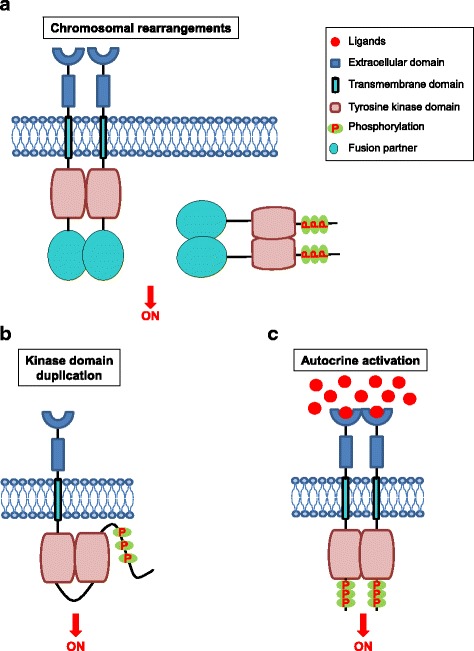Fig. 2.

Mechanisms of oncogenic RTK activation. a Chromosomal rearrangements result in the formation of a hybrid fusion oncoprotein consisting partly of the RTK and partly of the fusion partner, a distinct protein (shown in the figure by the yellow oval). These RTK fusion proteins can be membrane bound (left side of the figure) or cytoplasmic (right side of the figure) depending on the location of the genomic breakpoint. In either case, the result is an activated kinase domain. b Duplication of the tyrosine kinase domain could possibly form an intra-molecular dimer in the absence of ligands, resulting in RTK activation. c Schematic representation of autocrine activation of RTK signaling. Increased local concentration of ligand activated the RTK, resulting in RTK dimerization, increased kinase activity, and phosphorylation of the receptor C-terminal tail
